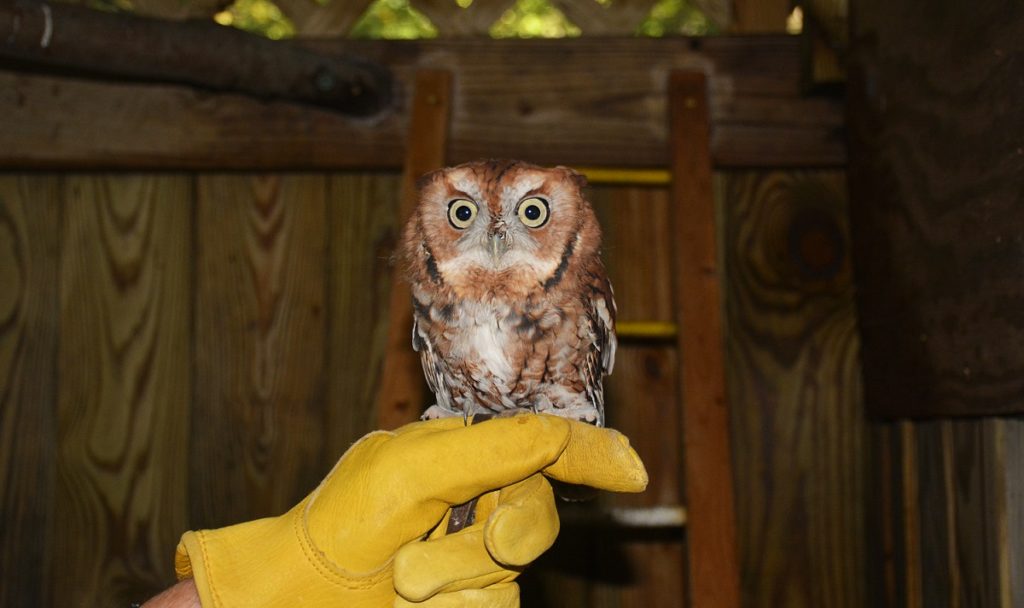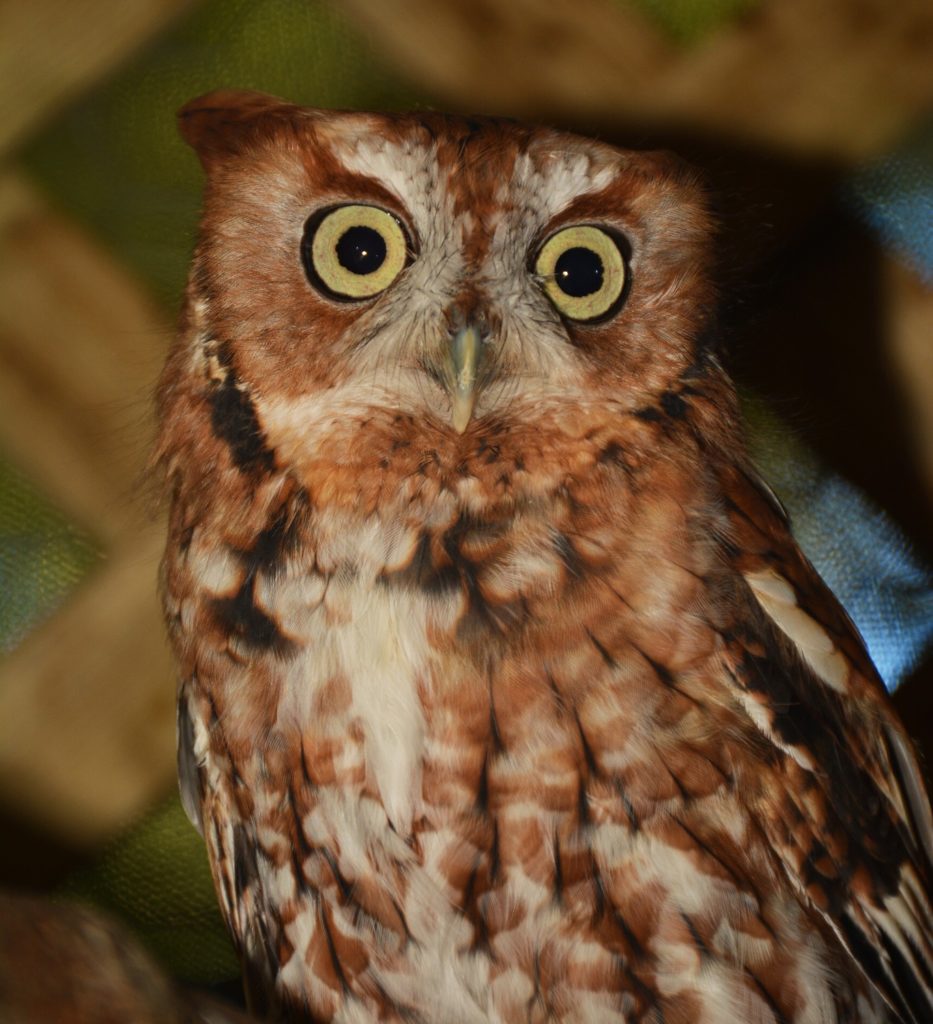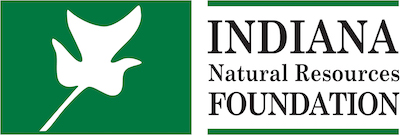Taking Flight: Patoka Lake’s Screech Owl

During the summer of 2020, a baby owl was found on the ground unable to fly and was kept in a wire dog kennel. While being kept illegally, the bird damaged all the newly growing flight feathers on its elbows and tail. The adult plumage was either damaged or did not fully develop that year.
Uncertain if the damages were permanent, a veterinarian deemed the bird non-releasable. From there, it needed a home out of the wild, which is where Patoka comes in. We took in a juvenile eastern screech owl for educational programming that was not flighted. She is a beautiful rufous (red) phase.

The screech owl at Patoka Lake.
The shelter where she lives last housed a non-flighted gray phase eastern screech owl and was ready for her to move in right away. Volunteers built a new nesting box for her to enjoy. On cold winter days, cooler mornings, or during storms, this is where she can be found most often.
One day this spring, she found her way on top of her light fixture at the top of the shelter wall. Now keep in mind, she still has no feathers on her elbows and only three tail feathers. Flight for her is nearly impossible at this point. We believe she climbed the netting on that wall. Staff built a guard to secure around the top of the light so she could no longer stand on top of it. Problem solved. She stayed on the perches built for her to use.
Then she started to gain elbow feathers over the early days of summer. This is when she really started testing her abilities. We found her above the inner door sitting on the doorframe. Keep in mind their feet are small and don’t require much perching space. Staff cut and installed a board to cover the doorframe to prevent her from perching above our heads and to prevent escape into the second entryway.
We changed the perching in her public viewing shelter due to her new mobility needs. We knew eventually she might make it up to her swing that hangs from the ceiling. And she did. The very next day after introducing her into the viewing shelter, she launched herself up to the swing a good 5-foot distance. She was content there, and I decided to let her get acclimated.
Thirty minutes later, I went out to check on her. I couldn’t find her. I looked everywhere before cautiously opening the door to step inside. I thought to myself, where in the world could she be? Then I found her nestled into the rafters where no one from the viewing area would ever see her, but she could easily see them. Staff again added boards to these areas to keep her from perching in unwanted places. We had all the areas covered, or so we thought.

Her last adventure was on a hot day in August, when I was going to check on her 30 minutes before my program was set to begin. I went out to get her on the glove and once again could not find her. There was one vertical post that did not have a cap and was not covered. She found it. Following her wild bird instincts that safety is not near the ground, she took to the highest perch she could reach. She got there from the swing. I safely removed her from her quiet hiding space and added a barrier to prevent her from reaching this area again.
Our last flighted owl was a barred owl, which was much too large to fit in these openings that this tiny, newly flighted owl has found. Both the viewing and night shelters have been surveyed carefully for any unwanted hidey holes she might want to creep into when she is sleeping.
Now that this small owl has all the feathers essential for flight, we are taking all the precautions to ensure her safety here under the new circumstances. The considerations we make for a non-flighted bird are different from those for a flighted bird. Preventing an escape or injury is extremely important to our staff. We do all that we can to provide the best life for our feathered friends who have met some rough situations while living in the wild and been deemed non-releasable.
Now that she is flighted people are asking, “Will she be released?” The answer is no. Once a bird is deemed non-releasable, that designation cannot be reversed. She has spent her entire life thus far in captivity and will continue to serve as an educational ambassador for her species and all Indiana owls.
~Dana Reckelhoff, interpretive naturalist at Patoka Lake
Check out our program schedule on the DNR calendar for upcoming dates to view her.
